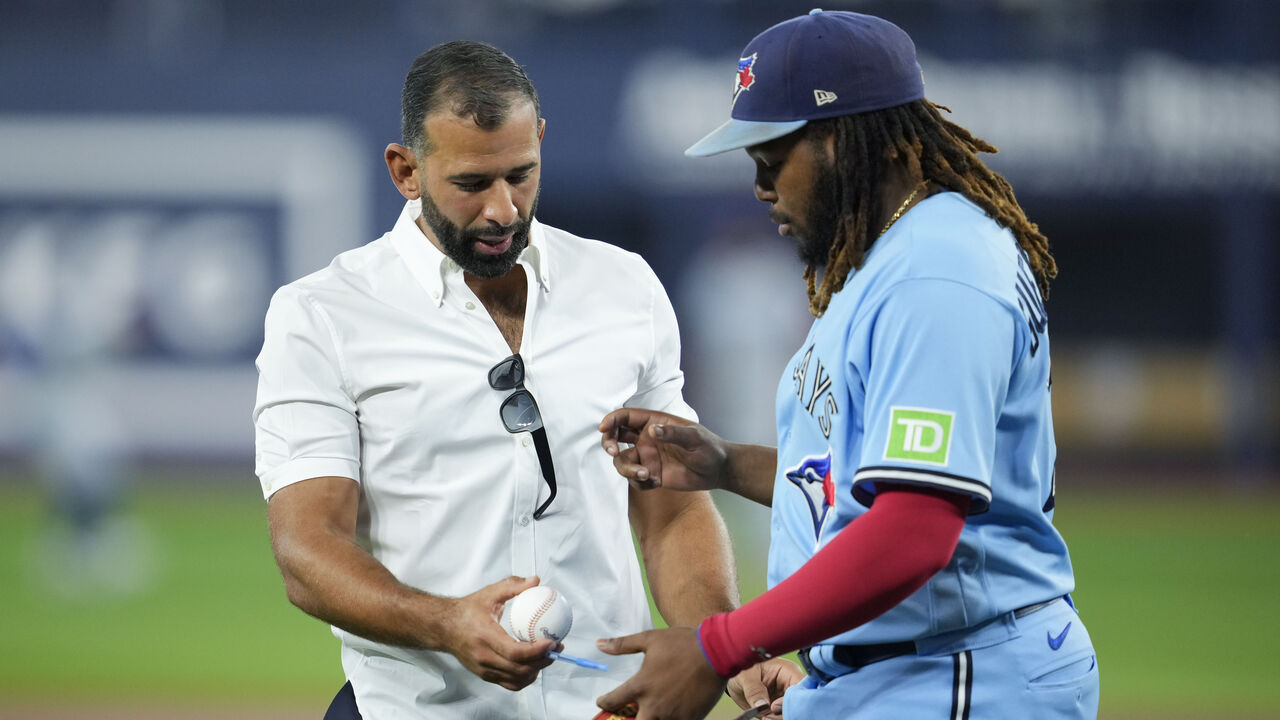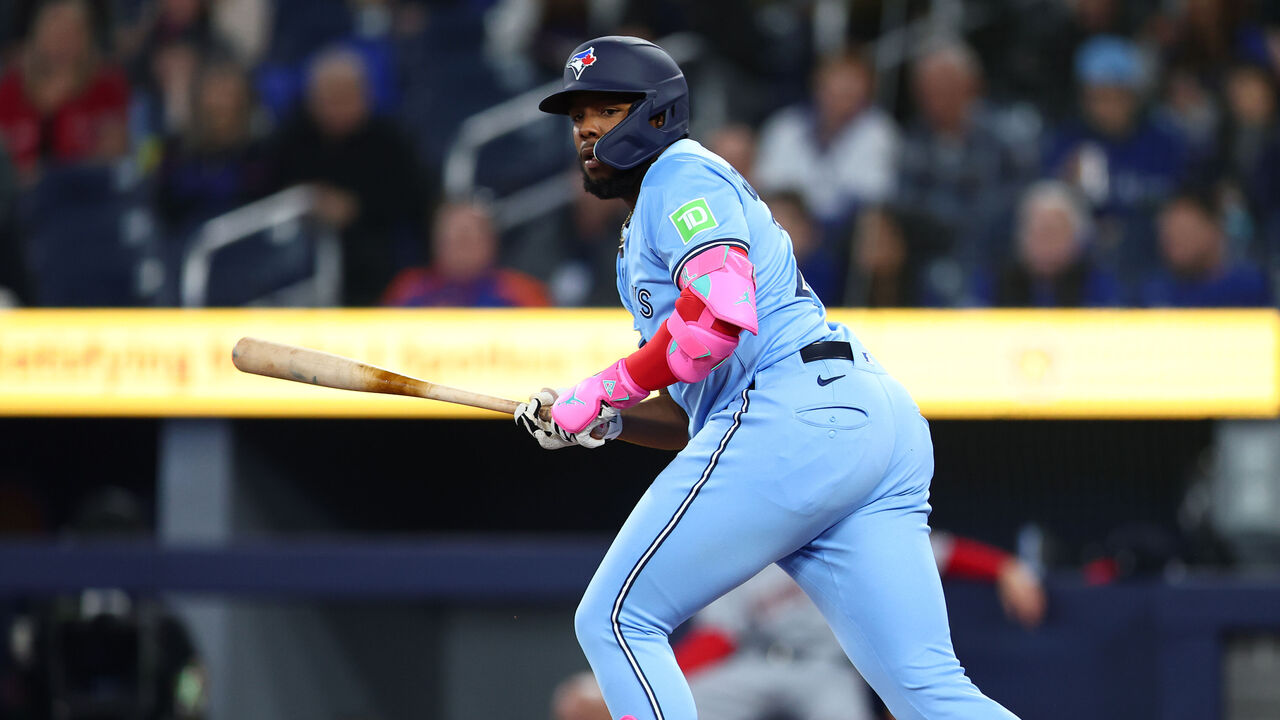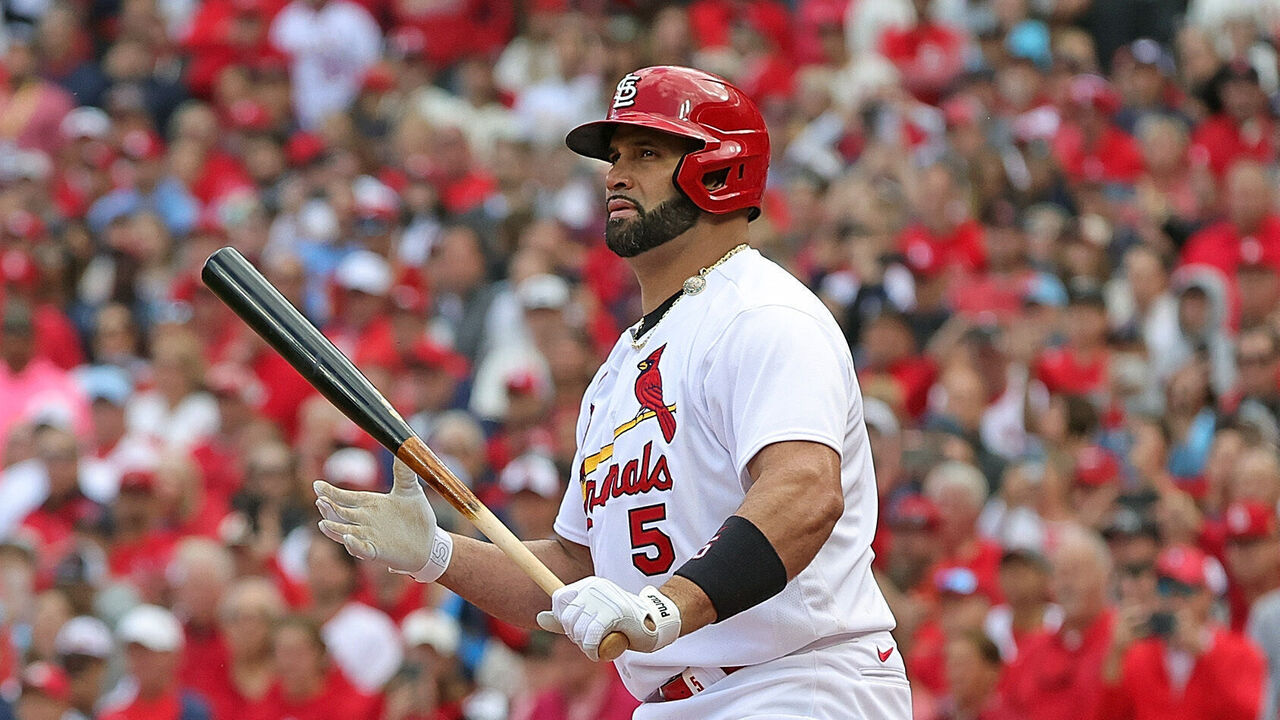The opportunity and risk of Jays' all-in deal with Guerrero
In about 20 years, if all goes well, Vladimir Guerrero Jr. will have a statue unveiled outside Rogers Centre.
By then he could hold every major offensive record in club history, and perhaps even a World Series ring.
That's the dream with the 14-year, $500-million deal Guerrero struck with the Toronto Blue Jays, one of the most consequential transactions in club history. The hope is he becomes the signature player in the franchise's history.
Sportsnet's Shi Davidi and Ben Nicholson-Smith report the deal has no opt-outs or deferrals. It's an all-in agreement on both sides.
The deal is incredibly significant not only because of the enormous sum guaranteed to one player but also for what it means for the club's on-field capabilities and clarity in planning its future course.
The deal comes with significant long-term risks for the club, but at the very least it gets a short-term PR and on-field victory.
Let's start with the on-field impact.

In retaining its most talented homegrown player of this century - a prospect Baseball America once attached top-of-the-scale scouting grades of 80 to his hit and power tools - the Jays now have a long-term cornerstone to build around.
Guerrero's career 137 wRC+ through his age-25 season ranks 37th among all hitters who have recorded at least 1,500 plate appearances before turning 26 since 1960.
And since his debut, his wRC+ ranks 12th among all hitters.
The only players to put up better marks at a similar age since 2019 are Yordan Alvarez, Juan Soto, Ronald Acuña Jr., and Fernando Tatis Jr.
The deal also eliminates some uncertainty about the direction the club would have taken had it lost Guerrero and Bo Bichette via free agency after this season.
If a club is paying a first baseman an average of $35 million per year for 14 years, its efforts should be focused on contending while Guerrero is in his prime. The deal will start to look less favorable in the second half of its term.
The commitment also makes the Jays' most recent offseason efforts make sense. Players such as Anthony Santander and Andrés Giménez work much better as supporting actors on a good team rather than being expected to be the faces of the franchise.
With Guerrero just in his age-26 season, Alan Roden on the major-league roster, and Bowden Francis in the rotation, the club can hope Guerrero's prime coincides with more improvement and production from investments made in their draft-and-development process. Guerrero will still be a cornerstone if and when current top prospect Arjun Nimmala arrives in, say, three years. Potential free agent targets also know Guerrero is going to be in Toronto.

This is also a public relations victory.
The deal injects optimism into a frustrated fan base that had seen the club fall short on high-profile free agent targets in recent offseasons. It's been a decade since the club's last postseason series win (2016 ALDS),
Despite additional renovations to Rogers Centre, the Jays' year-over-year attendance through its first seven home dates is down 5,158 fans per game. Last season, the Jays had the second-biggest attendance decline in the sport (a loss of 4,206 fans per game).
A cloud had been hanging over the club since the start of spring training, when Guerrero's deadline for an extension passed. There was a feeling this was the end of an era. That cloud is gone.
The biggest winner here is the Guerrero camp. It held firm until it received the offer it wanted.
Guerrero becomes the third player in MLB history to sign a contract reaching $500 million, joining Shohei Ohtani and Soto.
Guerrero's deal also shatters the previous highs for first basemen.
The deal more than doubles that of the biggest contracts given to free-agent first basemen - Albert Pujols' 10-year, $240-million contract and Prince Fielder's nine-year, $214-million deal. Both were signed in 2012. The biggest extension to any first baseman was the eight-year, $248-million pact Miguel Cabrera signed with Detroit in 2014.
The industry has become less willing to give big money to bat-first sluggers, in part because of concerns about how they age. Pete Alonso, 30, had to settle for a two-year, $54-million deal this winter.
The time elements make this risky for the Jays. Waiting until the eve of Guerrero's free agency made the deal much more expensive, and it now includes more decline years. The Jays will be paying Guerrero through age 40.

After Pujols joined the Los Angeles Angels, he began a steep decline in his mid-30s.
He was a below-replacement-level player from age 37-40. His only year of producing above a 123 wRC+ was in his first year of the deal. Of course, Pujols was already 32 when the Angels deal began. But his Cardinals years were Hall of Fame worthy.
Some declines can come even earlier, such as Fielder's.
Fielder's career ended after his age-32 season because of injuries. He was a below-replacement-level performer overall in his final three seasons with Texas from age 30-32.
Cabrera never hit more than 16 home runs in a season after age 34.
Of course, selling tickets and jerseys to watch a player chase 500-plus homers and 3,000 hits can soften such a decline for the club.
The good news is Guerrero will be beginning his deal at 27 and should be expected to be a well above-average hitter through age 32 with good health.
But after that, it could get ugly. The Jays need to have urgency during the next half a dozen seasons.
But if you are the Jays, or a Jays fan, that downside risk down the road is outweighed by the positives.
They kept talking and now they have a deal.
It was expensive, it could look ugly down the road for the club, but it could also shape the trajectory of the franchise in a way few players could.
Travis Sawchik is theScore's senior baseball writer.
HEADLINES
- The trade bubble's most interesting teams and players, and other observations
- Crochet doesn't regret Judge at-bat: 'Live and die with my best pitch'
- MLBers share College World Series memories: 'Most fun I've had playing baseball'
- Giants, Dodgers tied for NL West lead after Schmitt's 1st career grand slam
- Altuve: Peña an All-Star, will be in MVP conversation